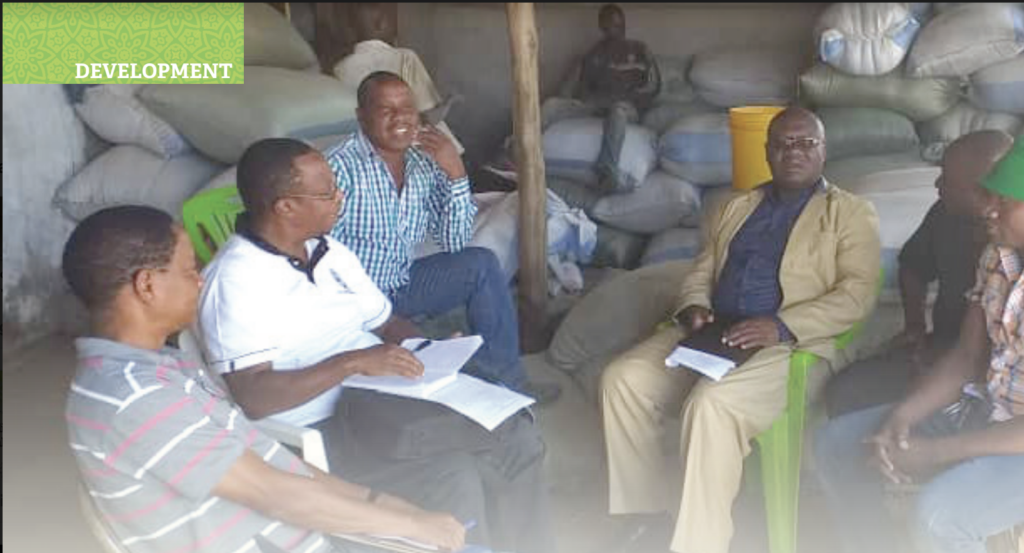By Dr Timothy Njagi
Following the successful food systems dialogues held by the United Nations Food and Agriculture Organization (FAO), there is renewed focus to shift the traditional approach of value chain development to agricultural food systems transformation. The Bureau of Food and Agriculture Policy (BFAP) and the International Food Policy Research Institute (IFPRI) have developed a new approach for value chain analysis.
The Policy Prioritisation for Value Chains (PPVC) is a market-centred approach that is more inclusive and places more emphasis on the role of the private sector in value chain development. The PPVC approach first identifies market opportunities that exist, then looks at what is required to take advantage of these market opportunities and finally looks at the capabilities of smallholder farmers to participate in these opportunities.
This way, the PPVC approach focuses on identifying value chains that can make significant contributions to job creation and economic growth, then prioritises investments and policies that upgrade these selected value chains and what is required to unlock the potential for the value chains during implementation of selected actions in value chain development.
The focus on food systems transformation is different from the farmer-first approach in that the approach now looks at the
entire system that includes farmers undertaking primary production, aggregators, transport and logistics suppliers, traders, processors, food services providers and inputs suppliers. Second, the investment and policy levers used to grow value chains are geared to ensuring a faster agri-food systems growth and overall agricultural transformation that seeks to grow farming household incomes, raise labour productivity, create jobs and alleviate poverty.
This is achieved in a process that provides governments with evidence-based analysis and prioritises investments, policies and public investments that drive market-led, inclusive, agricultural transformation, with the private sector playing a central role in the drive toward transformation. The PPVC process has two phases.
The first phase analyses a list of prioritised value chains and ranks them according to their potential against a set of indicators. Then a deep dive analysis is undertaken on selected value chains to identify the actions that will be implemented to transform them. A quantitative selection of value chains is undertaken to rank them across several indicators. The indicators are grouped as market-led indicators, inclusive and transformation indicators.
Market-led indicators are the potential for intensification of production, which is calculated as the inverse of the ratio between local projected yields from the partial equilibrium model and a projected reference yield i.e., yields attained by commercial farmers.
The second indicator is consumption growth, which measures the projected average annual growth in domestic consumption given the set of macroeconomic assumptions introduced in the partial-equilibrium framework such as population growth and per capita income growth.
The final indicator is the export potential, which is calculated as the average annual growth in import value in the potential neighbouring export markets over the past five years. The indicators on competitiveness include the input cost efficiency ratio, which measures the relative input costs per unit of production in the country versus the world. A higher value implies that production costs per unit of production in the country are higher compared to the rest of the world, which makes the value chain uncompetitive.
The other indicator is the Relative Trade Advantage (RTA), which combines a nation’s export and import share of a commodity in the international market as well as the nation’s export and import share of all commodities.
Value chains with increasing RTA over the past five years are regarded as increasingly competitive in the global market and are given a higher rating
The final assessment before the ranking of value chains is a qualitative scan. The qualitative scan identifies the level of policy support such as value chains listed on investment plans for the sector, or have a clear post investment plan policy implementation and support. The current and potential investment levels are evaluated to establish whether evidence of investments either by the public or private sector exists, or whether commitments have ben firmed.
The value chains are also evaluated for scalability. This scan checks the potential to link with complementary value chains, opportunities for imports replacement, and export opportunities. The final qualitative scan ascertains the agro-ecological and natural resource constraints, including water, land and other natural resources.
The scan establishes whether there is a binding constraint, whether there are opportunities to overcome the constrains. The PPVC process utilises various tools to undertake deep-dive analysis on selected value chains, i.e., qualitative value chain scans where structural and economic assessment of value chains is undertaken, value chain actor identified, product transformation and marketing flows traced and mapped. Gross margins for the current and potential scenarios are analysed at each node. A multi-market partial equilibrium analysis is undertaken for the major agricultural products and a dynamic assessment of market equilibrium undertaken looking at future demand and supply scenarios, traded volumes and domestic and parity prices.
This analysis is useful in determining the market competitiveness and potential for value chains that can bring about the desired transformation. An economywide computable general equilibrium analysis is then undertaken in which a dynamic assessment of sectoral linkages and resource constraints are established. This is useful in tracking GDP growth, employment, poverty and dietary change outcomes. The final tool analyses the GIS and spatial context integrated with in-country data to access multi-dimensional value chain impact and natural resource potential such as soils, temperature and rainfall. The PPVC approach has already been implemented in countries such as Tanzania, Kenya, Ethiopia and Malawi.
In Tanzania, the approach was used to analyse the sunflower value chain, in Kenya, the beef, coffee and fish value chains, in Ethiopia, the soya bean and sunflower value chains and in Malawi, the maize and soya bean value chains. Each of these studies have provided tangible recommendations to transform the value chains and make them more inclusive.
Dr Timothy Njagi is a Principal Researcher at the Tegemeo Institute of Agricultural Policy and Development

